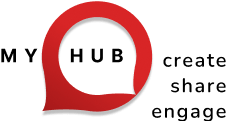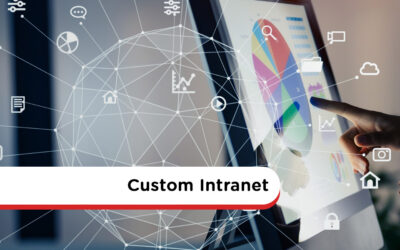Intranet Design Services
Choose from the self-build option with our support or work with one of our designers who will create a customized, fully-functioning intranet for your business, in 40 days or less, guaranteed!
The Challenge: Lack Of Time
You’ve defined your requirements and you know MyHub can deliver the outcomes you’re looking for. But do you lack the time and resources to customize your MyHub intranet site and get it launched on time?
The Solution: We Do It For You
By engaging with one of our designers, we’ll remove all of the complexity and risk by doing it all for you.
Planning For Success
Your MyHub intranet designer will lead the engagement process and ensure you’re updated on progress. The process is broken down into three key stages including:

Scope & Commercials
- Gathering requirements
- Defining launch objectives and timelines
- Developing a site plan including key pages, modules and content
- Agreeing the scope of works, pricing and terms.

Site Design
- Adding a company logo and changing site color options
- Designing and adding pages
- Adding content to pages including images, news articles, text, video and forms
- Adding folders and files to the Document Exchange
- Adding users to the site, Role Groups and Roles

Launch
- Handover and training
- Post-launch support
- Free site audit at any time
MyHub Designers, Delivering Great Outcomes
Intranet Design Articles
Employee Feedback Loops: A Simple Tool to Improve Workplace Culture
A feedback loop is a continuous, two-way communication cycle between employees and leadership, where employees provide honest input and leaders act on that feedback, then report back on changes made. This process helps employees feel heard and valued, which is increasingly important in workplaces where only about 30% of staff feel their opinions count.
These loops typically follow four main stages: collecting feedback (openly or anonymously), analyzing responses to spot trends, taking action based on what’s been learned, and communicating back to everyone involved about what changes are being made. When done well, it builds transparency, trust, and a more responsive workplace culture.
The positive effects are broad: improved employee engagement, better collaboration, reduced internal friction, and a workforce that is more adaptable and motivated. Feedback loops also help in proactively addressing issues before they escalate into conflict, and in fostering a sense of ownership among employees. To succeed, the article recommends clarifying purpose, using safe feedback channels, ensuring feedback is actionable, and maintaining regular, consistent dialogue.
Mobile Intranet Apps: Top 10 Applications and 25 Ways to Use Them
A mobile intranet is a smartphone-optimized version of a company’s internal network — not just a mobile view of the desktop site, but a dedicated app experience crafted for on-the-go employees. It lets users securely access news feeds, chat, documents, workflows, and directories from their phones with tap-friendly design and streamlined interfaces.
The article lays out the benefits: better internal communication through push notifications, news feeds, and real-time chat; higher productivity and efficiency by allowing workflows like form submissions, approvals, or document access anytime; and enhanced customer service, especially for field staff, by giving them tools to resolve issues quickly with full information access on the go.
It then presents essential features — push notifications, team chat with #channels, news & update feeds, employee directory, advanced mobile search, security and access controls, and automated mirroring of the desktop intranet’s content. The article also lists 10 leading mobile intranet app platforms and wraps with how to plan and build (or select) a mobile intranet app.
Easy Intranet: Successful Business Intranets Keep It Simple
The core premise of the article is that the most successful intranets are often the simplest ones. A user-friendly, intuitive intranet encourages adoption, reduces training friction, and becomes a central tool for employees rather than a burdensome system. The post emphasizes that “easy” intranets need not be basic—they can still deliver powerful features while minimizing complexity for both users and administrators.
In detailing what makes an intranet easy, the article outlines a number of features that matter: quick setup using drag-and-drop templates, modular systems (so admin picks only needed features), mobile optimization, robust security, and smooth integration with existing systems. The idea is to remove technical barriers so non-technical teams can get up and running swiftly.
Finally, it discusses how such intranets remain maintainable over time. By offering ongoing updates, built-in improvements, transparent pricing, and customer support (including design services for those short on time), the platform positions itself as a long-term partner, not just a one-off setup
USA Intranet – The Top Intranet Solutions In The United States
The “USA Intranet – The Top Intranet Solutions in the United States” article serves as a guide for organizations looking to select the best intranet providers operating in the U.S. market in 2025. It begins by stressing the importance of defining intranet purpose, setting goals, and establishing governance structures before choosing a provider. Clarity early on helps ensure the selected intranet aligns with company culture and solves real employee communication issues.
Next, the article outlines key strategy elements such as intuitive site navigation, content management, mobile accessibility, and strong information architecture. These are presented as essential foundations to ensure any intranet is usable, inclusive, and secure — especially for workforces that include remote or distributed staff. The piece underscores that a good intranet should reduce friction in workflows, support collaboration, and serve as a reliable knowledge-hub.
Finally, it presents a curated list of the top 10 intranet solutions in the USA, based on criteria including ease of use, integrations, UX design, pricing, and support. Platforms like MyHub are featured, alongside others such as Workvivo, Simpplr, Unily, Interact, ThoughtFarmer, Blink, and more. This gives readers a detailed comparison to help narrow down which solution suits their size, budget, and needs best.
Google Intranet: Unleash The Power Of Google Workspace In Your Intranet
Google Workspace has evolved into a staple for businesses of all sizes, providing cloud-based tools like Gmail, Google Docs, Sheets, Slides, Calendar, and Google Drive. These tools offer real-time collaboration, easy sharing, and ubiquitous access. When combined with a modern intranet, Google Workspace becomes even more powerful—bringing together document editing, communication, workflows, and collaboration in a unified platform.
MyHub’s Google-intranet model allows embedding Google documents (Docs, Sheets, etc.) directly within the intranet, meaning users don’t need to toggle between multiple apps. Permissions and document updates are managed in real time, ensuring everyone is always working from the latest version. This integration also supports single sign-on and unified access—reducing login fatigue and improving usability.
The benefits are broad: more efficient internal communication (news, forms, alerts), increased employee engagement through simplified workflows, better knowledge management by centralizing files and context, and cost savings from reduced tool overlap. MyHub also highlights that using Google Workspace together with their intranet increases scalability, reliability (cloud backups), automatic updates, and flexibility for hybrid-or remote work.
Custom Intranet: The 5 Best Intranet Builder For 2025
A custom intranet allows organizations to go beyond basic out-of-box solutions by tailoring features, branding, layout, and integrations to their own needs. Unlike generic intranets, custom ones support specialized workflows, employee engagement, and knowledge management in ways that align closely with the organization’s culture and goals.
The article lists 5 top intranet builder solutions for 2025—platforms that offer drag-and-drop design, strong theming and branding options, integrations with tools like Microsoft 365 or Google Workspace, mobile support, news feeds, collaboration tools, and search functionality. These builders vary in price, flexibility, and level of vendor support.
It also provides guidance for choosing the right custom intranet: assessing business needs, listing “must-have” versus “nice-to-have” features, evaluating usability, vendor reputation, scalability, cost models, and customization ability. The goal is to pick a platform that balances flexibility with ease of use.







